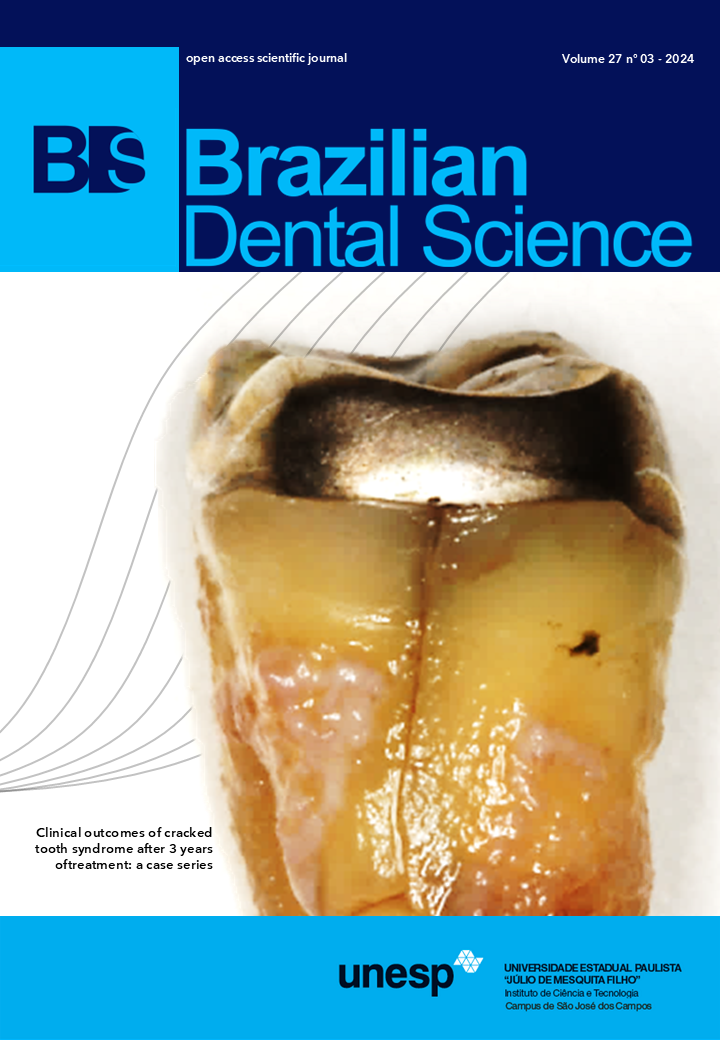Comparative evaluation of the canal transportation after retreatment with Solite RS3 and Protaper Universal retreatment files: a nano computed tomography study
DOI:
https://doi.org/10.4322/bds.2024.e4369Resumo
Objective: The primary objective of instrumentation during retreatment is to preserve the original curvature of the canal while removing gutta-percha. The current study assesses the canal transportation after retreatment with two different retreatment file systems. Materials and Methods: Sixty single-rooted teeth, extracted and decoronated, were obturated at a standardized root length of 16 mm. The samples were then divided into two groups, each comprising 20 single-rooted teeth. The instrumentation was performed using Solite RS3 Retreatment files for one group and ProTaper Retreatment files for the other. After both pre-operative and post-operative nano-CT scans, 3D reconstruction was conducted for analysis. Sections of the pre-operative and post-operative samples were taken at 7 mm, 5 mm, and 3 mm and 1 mm from the apex to calculate the canal transportation. Statistical analysis between the two groups was carried out using an independent t-test. Results: Solite RS3 retreatment files exhibited a statistically significant difference at all three levels (p < 0.05) when compared to ProTaper retreatment files, thus showing lesser canal transportation than the latter. Conclusion: Based on the above results, it can be concluded that Solite RS3 induced minimal canal transportation and resulted in a relatively centered preparation compared to the ProTaper Retreatment system.
KEYWORDS
Canal transportation; Nano-CT; Remaining dentin thickness; Retreatment; Solite RS3.
Downloads
Downloads
Publicado
Como Citar
Edição
Seção
Licença
TRANSFERÊNCIA DE DIREITOS AUTORAIS E DECLARAÇÃO DE RESPONSABILIDADE
Toda a propriedade de direitos autorais do artigo "____________________________________________________________________" é transferido do autor(es) para a CIÊNCIA ODONTOLÓGICA BRASILEIRA, no caso do trabalho ser publicado. O artigo não foi publicado em outro lugar e não foi submetido simultaneamente para publicação em outra revista.
Vimos por meio deste, atestar que trabalho é original e não apresenta dados manipulados, fraude ou plágio. Fizemos contribuição científica significativa para o estudo e estamos cientes dos dados apresentados e de acordo com a versão final do artigo. Assumimos total responsabilidade pelos aspectos éticos do estudo.
Este texto deve ser impresso e assinado por todos os autores. A versão digitalizada deverá ser apresentada como arquivo suplementar durante o processo de submissão.




























